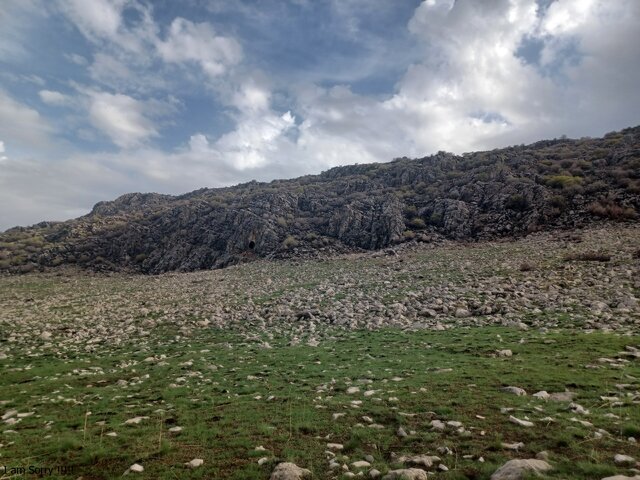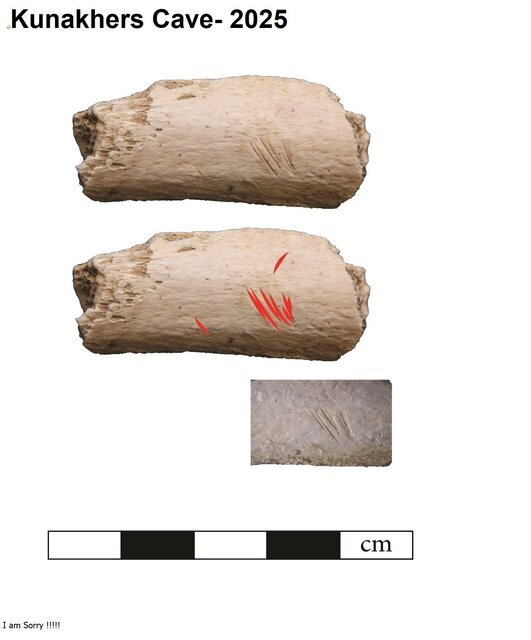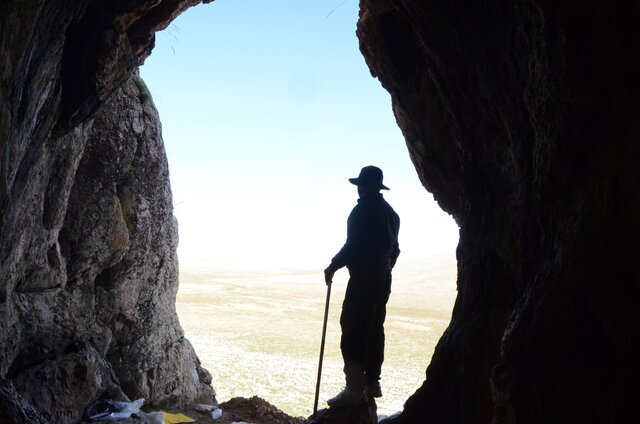Tehran – Archaeologists have revealed evidence of Neanderthal residence in the Kunahara Caves in the Zagros Mountains of Kelmansha, western Iran.
The finding comes from an emergency excavation project aimed at saving the site from ongoing damage caused by illegal drilling and natural degradation.
According to Nemat Hariri, head of the archaeology team that leads the emergency investigation, the ruins found on the site confirm the use of the caves from around 40,000 to 80,000 years ago. “Due to the massive destruction of recent years, we have launched this project with permission from the Institute of Cultural Heritage and Tourism and have received support from the Department of State Heritage,” Hariri said.
The project had two main objectives: rescue and documentation of cultural and biological remains at risk of destruction, and pursuit of scientific data related to the Paleolithic history of the region. Certain locations in the cave are located close to other important archaeological sites, including the famous Bawaya Wanlock Shelter.

Initial discoveries reveal that Musteria-style stone tools and sedimentary layers are very similar to those found at Bawa Yawan Shelter, a known Neanderthal site. These findings are consistent with the hypothesis that the Neanderthal community used the site repeatedly during the Late Pleistocene, even in the presence of a sustained snow line of about 1,800 meters.
“The new evidence is not limited to primitive or biologically, but is consistent with recent scientific changes in how Neanderthals are seen as complex hominins with sophisticated cultural, cognitive and viability,” explained Hariri.
The artifacts discovered include cut animal bones showing signs of heating from the hearth used by a group of Neanderthals. Bones represent fauna such as cave bears, horses, bos, caprids, jackals, rabbits, and even freshwater turtles to have a diverse and adaptive diet among these early humans.

Furthermore, the presence of a layer of furnaces and ashes further emphasizes the repeated, organized use of the cave as shelter. “This emergency drilling is not only essential to maintaining the remaining scientific evidence, but also contributes to a great understanding of Neanderthal lives in central Zagros,” added Hariri.
Findings from Kunakhera Caves may reconstruct the perceptions of early human life in Iranian highlands and highlight the importance of the region in the broader narrative of human evolution.
Get a glimpse of the amazing old stone belt Bawa Yawan
One of the oldest known mentions to humans can be tracked at Bawayawan, a rock shelter located in the Kermansha region of western Iran.
The rock art discovered by Iran’s top archaeologist Bawa Yawan, Saman Heidari Gran is the oldest evidence of the human spirit based on the signs of the Iranian plateau.
These rock art open us a direct window into complex human behavior that is difficult to obtain at other ancient sites in the late Pleistocene, said Hedali Gran.
“Paleostemic rock art has been discovered in many different forms around the world, including rock carving portraits and abstract signs. They have always been important and at the same time have been an attractive topic for archaeologists and anthropologists.”
“Now, Kermansha’s Paleolithic research has led to a very important discovery of the rock motif, one of the most important places in the region,” the archaeologist said.
He said that with a multifaceted research show, Bawa Yawan’s motif is comparable to the motifs of European ancient stones in terms of form and content.
Furthermore, based on statistical analysis, motifs discovered in Bawayawan may be related to the phenomenon of having a child and recording it. ”
The closest layer associated with Bawa Yawan rock art is estimated to date 13,400 years ago, archaeologists added.
According to this article, the long-term presence of Neanderthals in western Eurasia suggests that they are resilient subspecies of humanity. Archaeological records and fossil evidence show that towards their extinction, their territory was dramatically restricted for a variety of reasons, including limited food resources.
morning

